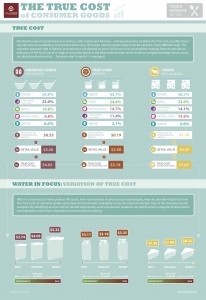Our current system of pricing products and services ensures that society perpetually makes poor choices.
Today we exclude most of the adverse social and environmental costs of producing goods from their price. The cost to clean up the groundwater pollution resulting from traditional agricultural methods such as the use of pesticides, or the cost of the adverse human health impacts of pollution from automobiles, does not show up in the product cost because those costs are externalized on society at large.
Including those costs in product pricing – and in the profit and loss statements of companies – is called “Full Cost Accounting.”
Until we remove the ability to transfer the cost of externalities from business to society, we will never willingly make choices that are aligned with the best interests of future generations. By mispricing both risks and consequences, we encourage corporate decisions that are at odds with the long-term interests of society.
The same holds true for the metrics that calculate our progress as a country. By adding the “goods” and the “bads” together on the same side of the ledger (our Gross National Product) and not charging ourselves for the depletion, destruction or diminished value of natural resources, we confuse economic activity with progress.
trucost.com provides us with some powerful examples and insight into just how full cost accounting would change the price of breakfast.
Trucost analyzed three common food products: breakfast cereal, fruit juice and cheese. They examined the stages of production from farm and orchard to the supermarket shelf. The embedded carbon, water, waste and pollution were calculated for generic products in each category. Trucost then calculated the “natural capital” cost of each of these. For carbon they used the social cost. For water, a local issue, they correlated the volume of water required to produce the raw materials with local scarcity by gathering data on the location of production and then pricing water accordingly.
Their analysis indicates that, on average, the true cost of a block of cheese should be 18 percent higher than the retail price, breakfast cereal should be 16 percent more expensive and fruit juice six percent more. These numbers, if the calculations contrasted “organically grown” v. “traditional” agriculture, would drive down the cost of organic as contrasted to the cost of traditional.

